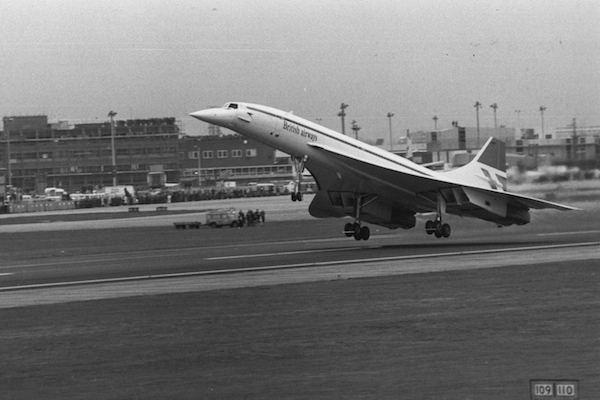I realised I wanted to pilot Concorde the day I turned 25. I learnt to fly as a member of the Air Squadron at Birmingham University, but I wasn’t sure I wanted to make a career of flying. But when I turned on the television on my 25th birthday and saw the first flight of the British Concorde, I thought ‘that’s what I’ll do’. I became Concorde’s longest serving pilot: 27 years.
Concorde has long since been retired, and I stepped down as Director of Flight Operations for British Airways a number of years ago. But the one problem that irked me throughout my flying career remains unresolved: what do we do about Heathrow?
Heathrow is crucially important to the UK. It is responsible for 1 per cent of UK GDP and drives the economic competitiveness of London and the South East. Its uniquely attractive catchment area, in large part a result of Heathrow’s connectivity, results in Heathrow’s airlines flying more premium seats per aircraft than any other major hub. The Thames Valley is home to the European headquarters of ten of the top 30 global brands: an economic powerhouse dependent on access to global markets. In fact, Heathrow has helped to shape the whole economy of the capital and the M4 corridor.
It was only when I started to read the ludicrous stories about building floating airports in the Thames Estuary, and other such schemes which would inevitably result in the closure of Heathrow, that I knew I had to go public with my plan: Heathrow Hub.
This scheme involves extending both of the existing runways up to a total length of about 7,000 metres and dividing them so that they each provides two, full-length, runways, allowing simultaneous take-offs and landing thereby almost doubling the capacity of the airport. It also includes a new passenger interchange immediately north of Terminal 5, directly connecting the airport with the M25 motorway, Crossrail, the Great Western Main Line and, as an option, an alternative HS2 route via the airport (if HS2 proceeds).
Crucially, few (if any) new residential areas will be brought into the airport’s noise footprint. On top of that, the increase in capacity would mean the length of the night-time jet ban could be lengthened while some form of runway alternation could enable other innovative noise reduction techniques to be considered. The scheme would also be cost effective: the cost and the airport user charges would be much lower than that of any other new airport. It would also be entirely privately funded.
This presents a huge advantage to UK tax payers: the relatively simple nature of the Heathrow Hub infrastructure, and the ability to take advantage of past investment in Heathrow, results in a capital cost far lower than all the other options being considered. In addition, the phased nature of the proposals allows capacity to be matched with demand. This increases affordability and reduces the commercial risk inherent in ‘all or nothing’ proposals for entirely new infrastructure.
Our proposals could give London the airport capacity it needs at a reasonable cost. Heathrow is arguably as important to UK economic competitiveness as the English language, our time zone and our legal system – why would we discard such a prize asset?
Captain William ‘Jock’ Lowe is a director of Runway Innovations and Heathrow Hub. www.heathrowhub.com. His report Double up on Heathrow is published by the Centre for Policy Studies.






Comments